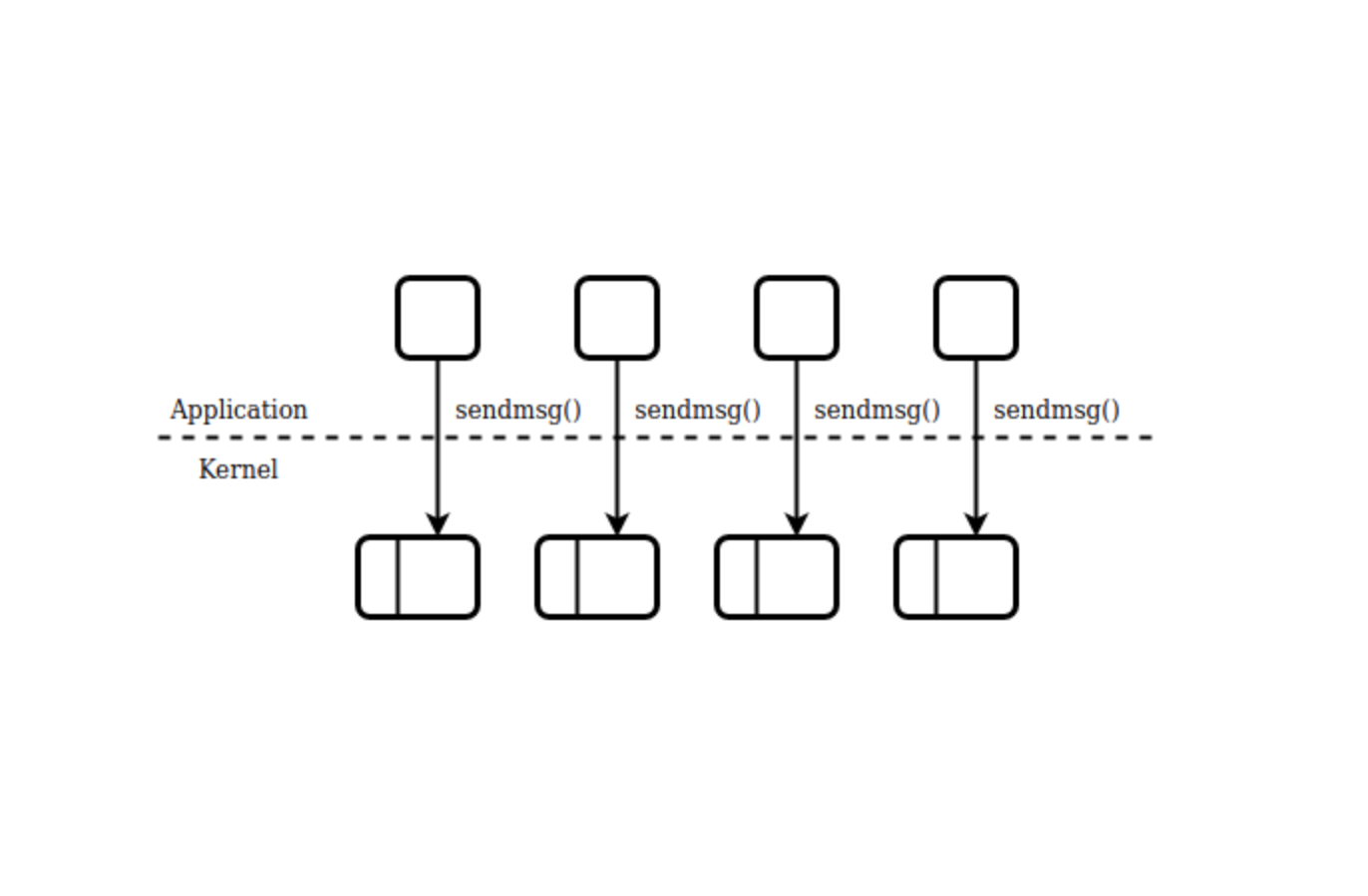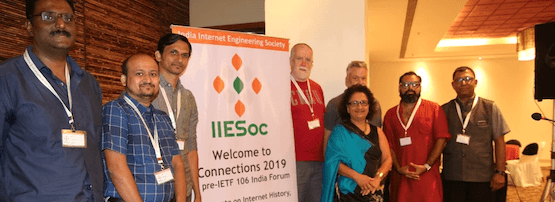Anana Taps Dell, Pluribus SDN for Data Center Project
Anana wanted to automated infrastructure to unify its two data centers and provide more agile...
Accelerating UDP packet transmission for QUIC

This was originally published on Perf Planet's 2019 Web Performance Calendar.
QUIC, the new Internet transport protocol designed to accelerate HTTP traffic, is delivered on top of UDP datagrams, to ease deployment and avoid interference from network appliances that drop packets from unknown protocols. This also allows QUIC implementations to live in user-space, so that, for example, browsers will be able to implement new protocol features and ship them to their users without having to wait for operating systems updates.
But while a lot of work has gone into optimizing TCP implementations as much as possible over the years, including building offloading capabilities in both software (like in operating systems) and hardware (like in network interfaces), UDP hasn't received quite as much attention as TCP, which puts QUIC at a disadvantage. In this post we'll look at a few tricks that help mitigate this disadvantage for UDP, and by association QUIC.
For the purpose of this blog post we will only be concentrating on measuring throughput of QUIC connections, which, while necessary, is not enough to paint an accurate overall picture of the performance of the QUIC protocol (or its implementations) as a whole.
Test Environment
The client used Continue reading
T-Mobile Poland First to Deploy ONF Open Source EPC
The Open Mobile Evolved Core (OMEC) platform supports connections into the carrier’s existing...
Indian Community Making the Right Connections

In the lead up to last month’s Internet Engineering Task Force meeting in Singapore, IETF 106, the India Internet Engineering Society (IIESoc) held its third annual Connections conference in Kolkata, India.
This pre-IETF event aims to increase participation in IETF discussions from the Asia-Pacific region, specifically India.
Like the years before it, this edition of Connections had four technology tracks across two days; the themes of which – IoT, security, routing, and research – were chosen with the audience and location in mind, given Kolkata is a major research hub in India. As such, there was record participation, with a large number of local students attending the event, many of whom were excited to learn about, discuss and contribute to the work being considered in the IETF and how they can contribute to this group.
The Importance of Being Involved
A feature of past Connections events has been the participation of IETF working group chairs and RFC contributors attending en route to the impending IETF conference. This year was no different and we were grateful to have former IETF chair, Fred Baker, who presented the keynote and shared his journey at the IETF during the meet and greet session.
The Continue reading
Synology Running Out Of Space? Empty The Recycle Bin.
While performing end-of-year clean up on lab infrastructure, I discovered my 8 disk Synology array with about 22TB of usable storage was almost out of space. Really? What had I filled all that space with?
After a lot of digging around, I found that I had enabled the Recycle Bin on one or more Shared Folders, but had NOT created a Recycle Bin emptying schedule.
 This means that over several years of shoving lots of data through the array, the various Recycle Bins attached to various Shared Folders had loaded up with cruft. I figured this out running a Storage Analyzer report.
This means that over several years of shoving lots of data through the array, the various Recycle Bins attached to various Shared Folders had loaded up with cruft. I figured this out running a Storage Analyzer report.
To get my space back, the solution was to empty the Recycle Bin. One way to do that is to edit the properties of a Shared Folder and click “Empty Recycle Bin”. You’ll get a sense of relief as Storage Manager shows available space growing as the Synology removes however many million files you’ve been composting for however long.
However, I like to solve problems permanently. No one has time to manually empty recycle bins on a disk array in a distant rack. Manually. Like a savage. Yuck.
Automating a recycle bin task on a Synology box is Continue reading
Day Two Cloud 030: The Gnarly Challenges Of Edge Computing
On today's Day Two Cloud podcast, Rob Hirschfeld joins us to examine the challenges of working in edge environments. Many of those challenges include the infrastructure itself: how to provision, configure, and operate equipment in remote locations, how to ensure logical and physical security, and how to manage it all remotely.Day Two Cloud 030: The Gnarly Challenges Of Edge Computing
On today's Day Two Cloud podcast, Rob Hirschfeld joins us to examine the challenges of working in edge environments. Many of those challenges include the infrastructure itself: how to provision, configure, and operate equipment in remote locations, how to ensure logical and physical security, and how to manage it all remotely.
The post Day Two Cloud 030: The Gnarly Challenges Of Edge Computing appeared first on Packet Pushers.
We’re Back
It’s been a while but we’re back and it feels great. In this episode I talk about the status of the show, where the heck I’ve been, and where we are headed. I also share my personal story on burnout and some of the lessons I learned along the way.
In the episode I mention the fantastic Denise Fishburn and a video she did on burnout that helped me realize what I was dealing with. That video is embedded below.
Outro Music:
Danger Storm Kevin MacLeod (incompetech.com)
Licensed under Creative Commons: By Attribution 3.0 License
http://creativecommons.org/licenses/by/3.0/
The post We’re Back appeared first on Network Collective.
Prototyping optimizations with Cloudflare Workers and WebPageTest

This article was originally published as part of Perf Planet's 2019 Web Performance Calendar.
Have you ever wanted to quickly test a new performance idea, or see if the latest performance wisdom is beneficial to your site? As web performance appears to be a stochastic process, it is really important to be able to iterate quickly and review the effects of different experiments. The challenge is to be able to arbitrarily change requests and responses without the overhead of setting up another internet facing server. This can be straightforward to implement by combining two of my favourite technologies : WebPageTest and Cloudflare Workers. Pat Meenan sums this up with the following slide from a recent getting the most of WebPageTest presentation:

So what is Cloudflare Workers and why is it ideally suited to easy prototyping of optimizations?
Cloudflare Workers
From the documentation :
Cloudflare Workers provides a lightweight JavaScript execution environment that allows developers to augment existing applications or create entirely new ones without configuring or maintaining infrastructure.A Cloudflare Worker is a programmable proxy which brings the simplicity and flexibility of the Service Workers event-based fetch API from the browser to the edge. This allows a worker to Continue reading
Orchestrating Better Business Outcomes with Anana Ltd.
In the world of information technology, orchestration is what vendors promise and end users dream about – systems working together...Do We Need Math in Networking?
I should have known better, but I couldn’t resist being pulled into a Twitter spat around the question “whether networking engineers need to know something about math” a long while ago.
Before going into the details, let’s start with Wikipedia definition: “Engineering is the use of scientific principles to design and build machines, structures, and other things” including “specific emphasis on particular areas of applied mathematics, applied science, and types of application”.
So feel free to believe that you don’t need any math or other science (because there’s very little science behind what we do in networking) in your job, in which case you might want to stop reading… but then at least please think twice about your job title.
Read more ...FCC Chair Sets Ambitious 5G Goals for 2020
"Using the software layer to address not just the security but also the cost element, the cost...
flexiWAN Open Source SD-WAN Platform Hits GA
The platform is designed to run on any x86-based white box. However, the company has partnered with...
Decentralized Calico Network Security Policy Deployment for GitOps – Part 2
In part 1 of the GitOps blog series, we discussed the value of using GitOps for Calico policies, and how to roll out such a framework. In this second part of the series, we will expand the scope to include decentralized deployment and GitOps.
We see different personas among our customers deploying three types of controls:
- Cluster hardening policies are enforced and controlled by the platform admin
- Organizational security controls are enforced and controlled by the security admin
- Each application team may have their own unique requirements. This is controlled by the DevOps admin for the specific application.
This is different from the traditional firewall world, where the security admin is responsible for managing security policies, and the change management window could be several weeks in duration. Adopting that model in Kubernetes is simply counter to the very principles of enabling the developers. So how can we make policy creation and enforcement simple, yet adhere to organizational processes? The answer lies in simple tooling, GitOps and governance.
Policies have business logic that must be implemented in YAML. The business logic (allow access for service A to service B, open port 443 inbound on service B, permit access to slack webhook Continue reading
Decentralized Calico Network Security Policy Deployment for GitOps – Part 2
In part 1 of the GitOps blog series, we discussed the value of using GitOps for Calico policies, and how to roll out such a framework. In this second part of the series, we will expand the scope to include decentralized deployment and GitOps.
We see different personas among our customers deploying three types of controls:
- Cluster hardening policies are enforced and controlled by the platform admin
- Organizational security controls are enforced and controlled by the security admin
- Each application team may have their own unique requirements. This is controlled by the DevOps admin for the specific application.
This is different from the traditional firewall world, where the security admin is responsible for managing security policies, and the change management window could be several weeks in duration. Adopting that model in Kubernetes is simply counter to the very principles of enabling the developers. So how can we make policy creation and enforcement simple, yet adhere to organizational processes? The answer lies in simple tooling, GitOps and governance.
Policies have business logic that must be implemented in YAML. The business logic (allow access for service A to service B, open port 443 inbound on service B, permit access to slack webhook Continue reading
Broadcom Sells Accenture Symantec Security Services Biz
The business unit had a long list of “potential suitors,” said Symantec’s John Lioanto....




